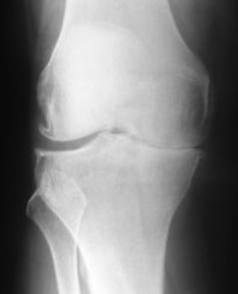Of the 360 joints in the human body, the knee joint is the largest, supporting almost the entire weight of the body. The knee joint, itself is made up of numerous ligaments and 3 joints. Unlike other joints, the knee has allows for both flexion and extension, with a certain amount of rotation as well. This rotation can be internal or external. Injury to the knee joint is common, partly due to its construction and partly to its various roles in carrying and propelling the body. When the joint becomes injured to the point at  which it cannot be medicated or treated with therapies, knee surgery is required. Knee surgeons are skilled in a number of different treatments.
which it cannot be medicated or treated with therapies, knee surgery is required. Knee surgeons are skilled in a number of different treatments.
Meniscus Surgery
In some situations, the menisci of the knee become injured. These are discs that protect the ends of the femur and tibia, keeping them from rubbing on each other. These discs not only act as a cushion between the ends of the bones, they act as a cushion, remediating and absorbing impact.
Unfortunately, if the knee is abnormally rotated or bent incorrectly, the meniscus can rip. This causes excruciating pain, and interferes with the normal functioning of the knee.
Arthroscopic surgery is usually performed to either repair, transplant, or remove the damaged meniscus. When possible, the disc is repaired or transplanted, as this is more likely to keep arthritis from developing later. This type of surgery is done with a small incision through which a tiny camera and the operating instruments are inserted.
Lateral Release Surgery
The kneecap is held in place with tendons, and slides back and forth in groves that keep it operating properly. Sometimes, the kneecap is pulled to one side or the other, dragging it out of it’s groove. Arthroscopic surgery can repair and realign the problem.
ACL Reconstruction
Perhaps the most common surgery, ACL reconstruction repairs the anterior cruciate ligament. This ligament is crucial for stability of the knee, and requires grafting of tissue from the patient’s own body. Often, this tissue comes from the hamstring or patellar tendons.
Unicompartmental Knee Replacement
This is known as a partial knee replacement. While not everyone is eligible for this procedure, it can be performed to combat osteoarthritis. With partial knee replacement, only a part of the damaged knee is replaced with plastic and metal parts. Recovery time is faster, and there is less loss of blood than with complete knee replacement.
Full Knee Replacement
With full knee replacement surgery, the patient undergoes removal of the entire knee joint, with implantation of a new metal and plastic joint. This is most commonly done for people who suffer from osteoarthritis, although any person suffering with a  severely damaged knee joint can undergo knee replacement surgery.
severely damaged knee joint can undergo knee replacement surgery.
Knee surgeons perform upwards of 600,000 knee surgeries every year, in the U.S. This staggering number is second only to the fact that only about 20% of all knee patients require surgery. Obesity and arthritis are the two many causes of knee problems.


